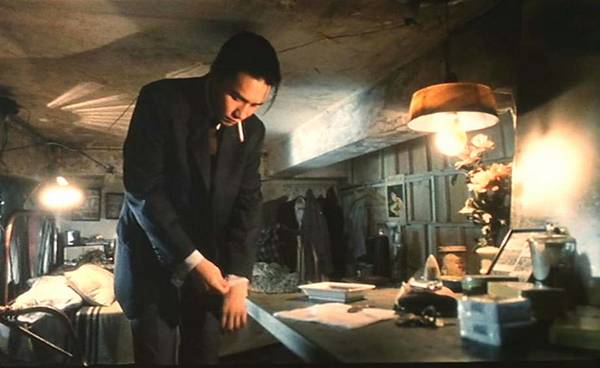1990, TSPDT Rank #373
Days of Being Wild begins in an arresting fashion, showing a series of encounters between a brash young man (Leslie Cheung) and a shy young woman (Maggie Cheung) at the deserted shop counter where the woman works in early 1960s Hong Kong. As with much of the film, these scenes seem to occur in a theatrical dream world where the real world rarely seeps in. The man, York, unloads his rage towards his adoptive aunt and the mother he never knew by seducing women with his rough charm and then degrading and dismissing them once he has them on the hook. A number of other characters gradually enter the picture, although the feeling of confinement and emptiness persists.
As a result, Hong Kong is shown in a completely different light from its usual cinematic image. Despite a few brief outbursts of violence (also in confined settings), there is little kinetic energy, no bustling street life - just a subdued landscape populated by characters invested in their own solitary emotional angst. Although it's sometimes difficult to become invested in the emotions of these flawed and insecure characters, the film was the first collaboration between Wong and master cinematographer Christopher Doyle (who also worked on later Wong films like Chungking Express and In the Mood for Love), and as such it is always visually stunning. The color palette is lush and cool, while the textures convey a general atmosphere of grimy and stifling humidity. There's also a feeling of the characters existing on a lone outpost at the edge of the world, which is amplified in the final section of the film, as York and ex-policeman Andy Lau as embark on a doomed train ride through the Philippines' tropical jungle that feels like a journey to nowhere.

THE ENDING (spoilers)
While the majority of the film is fairly straightforward despite the strange theatrical atmosphere and lack of closure or resolution between the characters, the ending section provides a template for Wong's later experimentation with time and narrative structure. Glimpses of the two women seduced by York earlier in the film (Maggie Cheung and Carina Lau) are interspersed with shots of a clock and a ringing phone. But the two male characters are suddenly replaced by a third, a well-dressed man played by Tony Leung (who would later star with Maggie Cheung in In the Mood for Love), shown in dressing for a night out in a cramped apartment. This scene plays out in one long dramatic long take, and the musical theme seems to connect this unknown character to York and Lau, suggesting some type of connection between the three - maybe even some type of transfiguration.
This unexpected and mysterious ending is reminiscent of the sudden gear-shift at the end of In the Mood for Love, which casts everything that came before in a new light. Here the intended meaning is less clear, but the effect is no less beguiling. In any case, while Days of Being Wild is not as satisfying as Chungking Express or In the Mood for Love as a whole, Wong and Doyle's visual mastery was already on full display in this early work, and many of Wong's later themes and narrative devices can be traced back to this film (which has been said to form an informal trilogy with In the Mood for Love and 2046, Wong and Doyle's last collaboration to date).


No comments:
Post a Comment